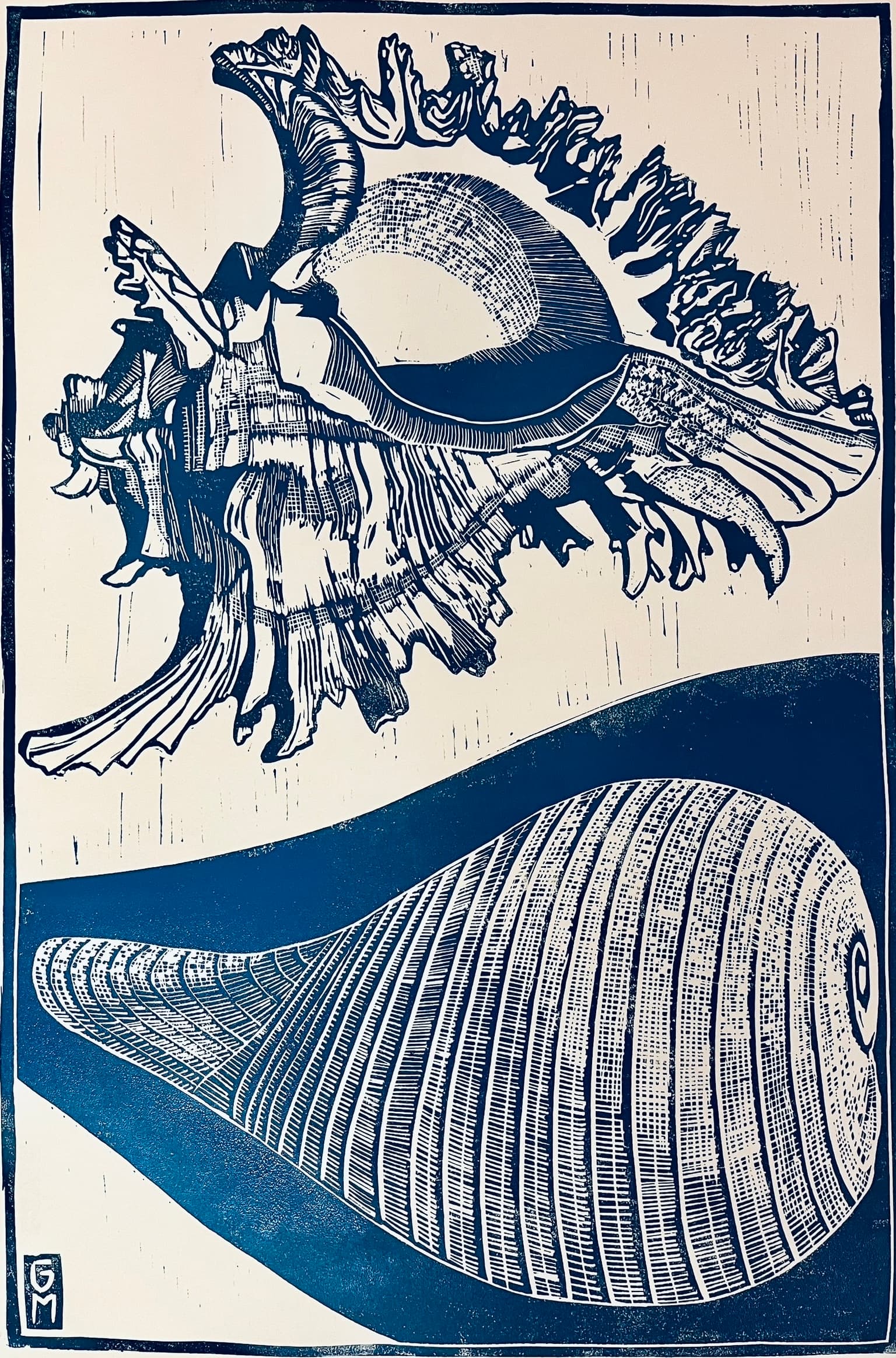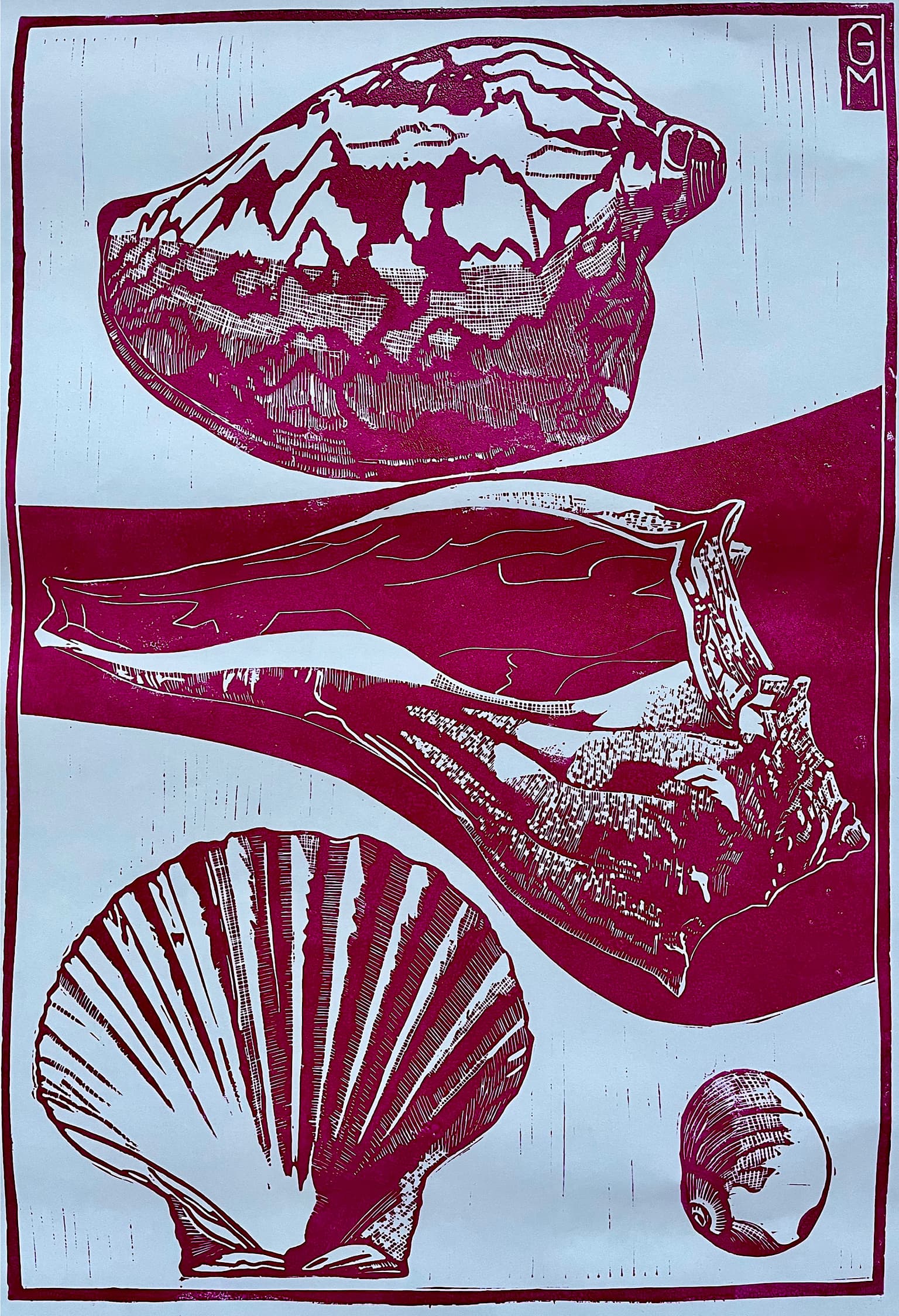2024 Joint Mathematics Meetings
Gabriele Meyer
Artists
Gabriele Meyer
Senior Lecturer Emerita
University of Wisconsin, Madison
Madison, Wisconsin, USA
Statement
I love sea shells and admire their varied forms and patterns. They were an inspiration to both my hyperbolic crochet and my linoleum prints. As a youth I realized that the lines, patterns and shapes can be explained mathematically, which provided an impetus to go into this field, since it provided a stable income. Now that I am retired, I can devote my time to depict shells and make hyperbolic crochet surfaces, which I love doing. In both areas I emphasize the mathematical aspects such as the patterns on shells and their shapes, also the play of light and shadows on them.
Artworks

smooth curves and fractal lines
61.0 x 46.0 cm
linoleum print
2023

noble volute, whelk and scallop
61.0 x 46.0 cm
linoleum print
2023